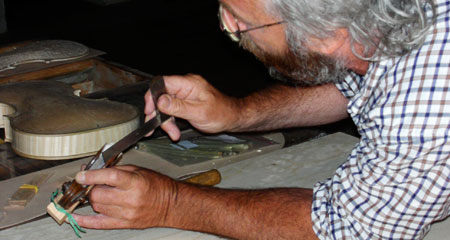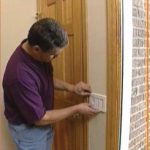There’s no need to despair if one of the strings get broken, as repairing a violin by replacing the strings is a simple procedure. Here are the steps you need to take.
Replacing One Violin String
Required Tools and Materials
Violin
Replacement strings
Tuner
Tweezers
Step 1
To replace one string, begin by unfastening the peg. Keep doing this until it becomes possible to unwind the string. Pull the string. Disconnect it from the tailpiece. For broken strings still linked to the peg, pull it out with the tweezers.
Note: do not remove the peg if the string is still connected; this may damage the violin.
Step 2
Now you have to connect the string’s ball end on the tailpiece. Do this by threading the ball in the hole of the tailpiece. If there’s a plastic sleeve, slide it at the point where it passes the bridge. To resume repairing a violin string, undo the peg and string in the replacement string via the peg hole. Do this from front to the back.
Now wind some wraps (counterclockwise) from the hole. When you get the string’s end, wrap the rest in a counterclockwise manner heading to the peg hole. This is needed to keep the string aligned. Wind the string and set the peg in. Be sure the string is at the fingerboard notch. Do not fasten it any more than it needs to be.
Step 3
After the string is secured near to its pitch, press in the peg. Use the fine tuner to get it right.
Replacing all the Violin Strings
If repairing a violin means replacing all the strings, use the following procedure.
Step 1
Take it out one string at a time, beginning with the G string. The removal procedure is the same as the one described earlier. Take out the other strings, going from D to E.
Step 2
Put in the new strings in the manner depicted earlier. Now you can fine tune them all. Start tuning with the A string. Turn the peg for that particular string until it is nearly in sync with the tuner. To get the D string ready, play A and D together.
Step 3
You can continue repairing a violin by fine tuning the G and E. When you’re done, check the other strings again.
Tips and Warnings
When adjusting the strings, keep in mind that changing one may affect the others as well. If necessary, go back to the start (i.e. A) and proceed to D, E G and once more to E.
Remember that new strings require a few days to keep the pitch. Do not get frustrated; just fine tune the string every time you go out and play. To get the best sound, you should get the appropriate replacement string. If the remaining strings are steel, then your replacement string needs to be steel as well.
All you really need when repairing a violin is patience. Once you have installed the string or strings, you just need to fine tune them so you can start playing.



